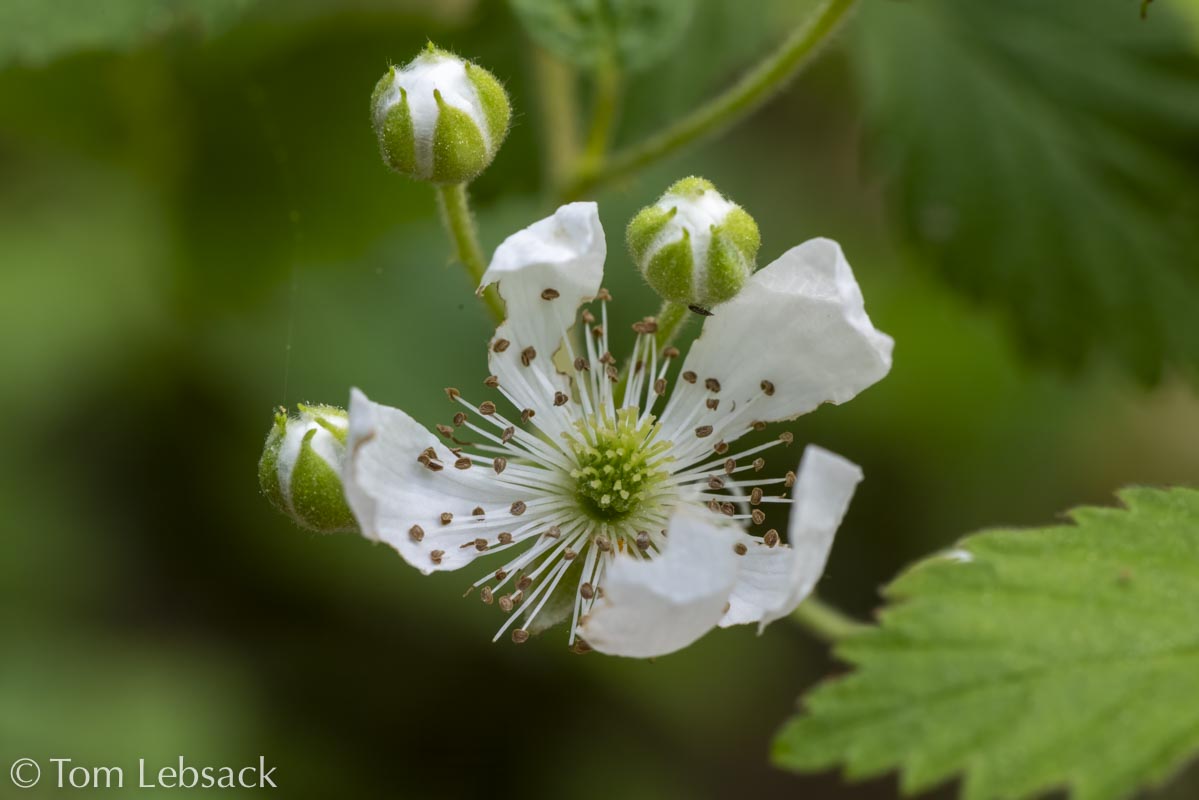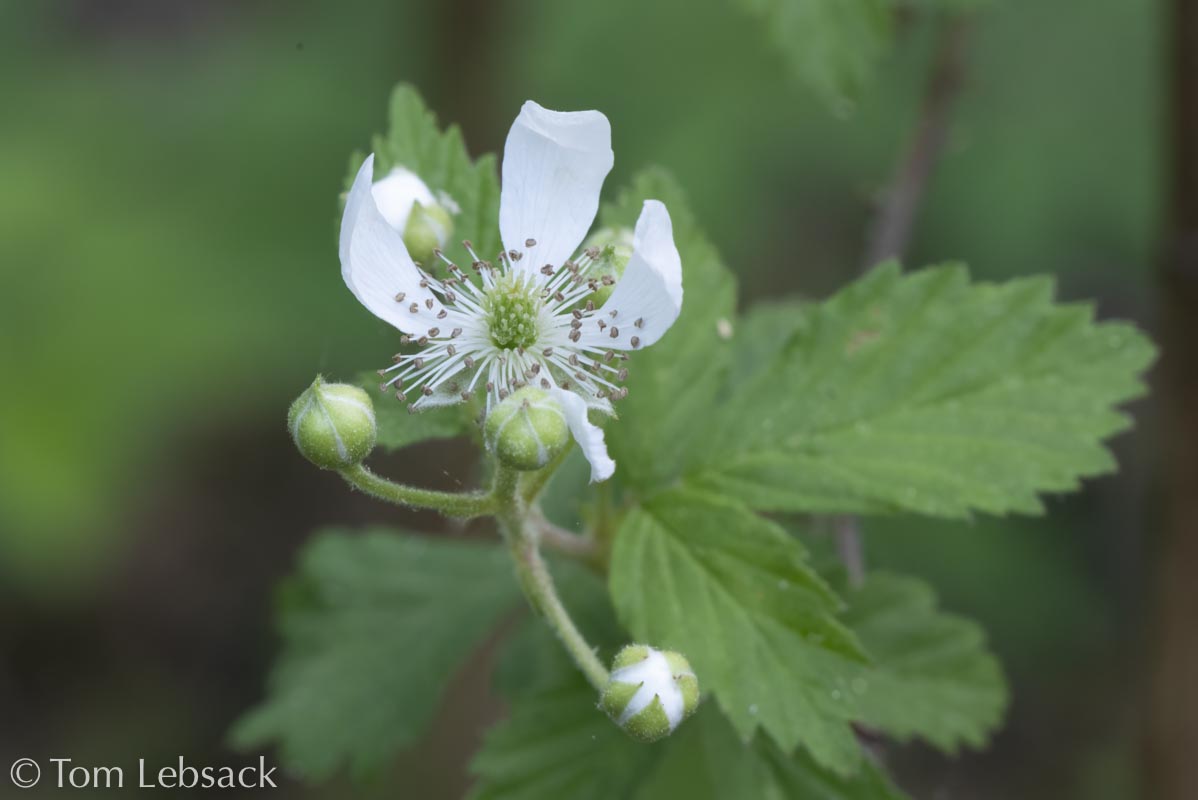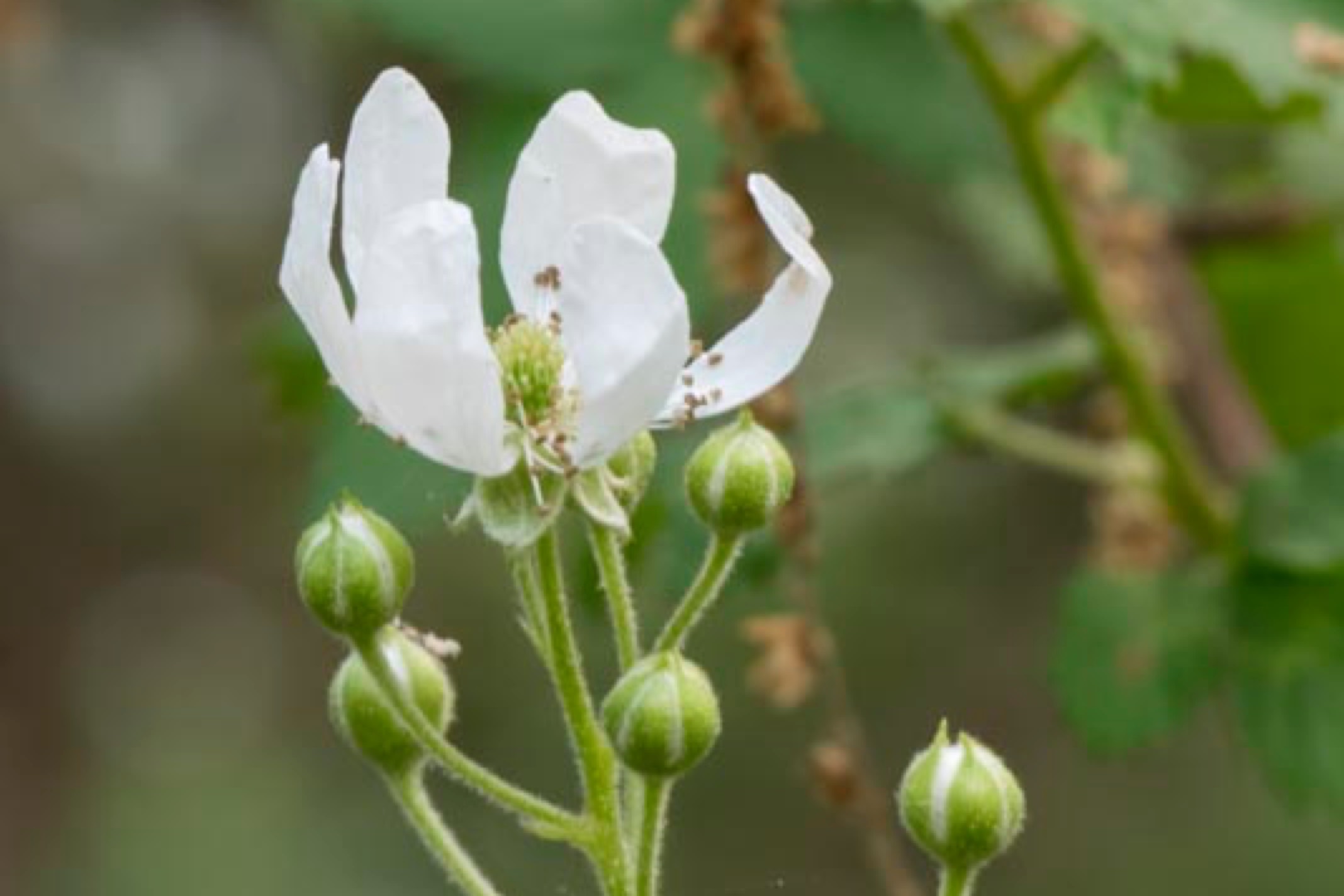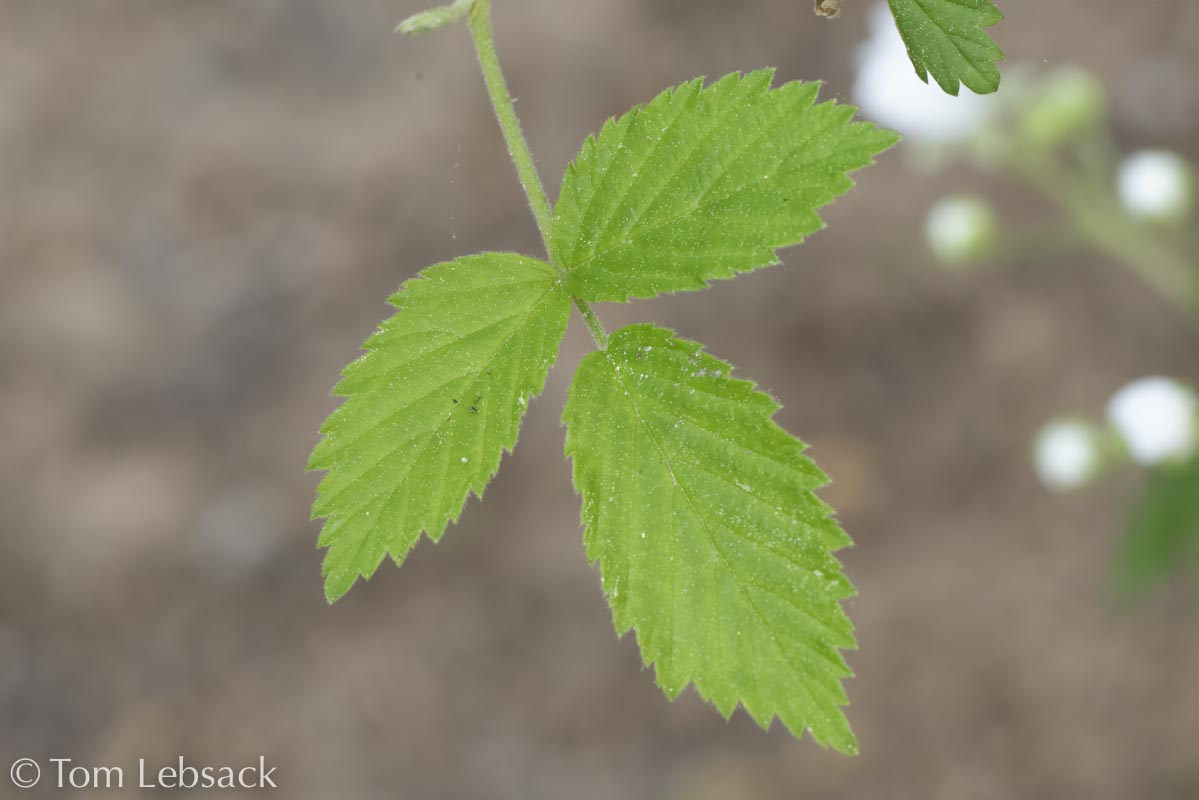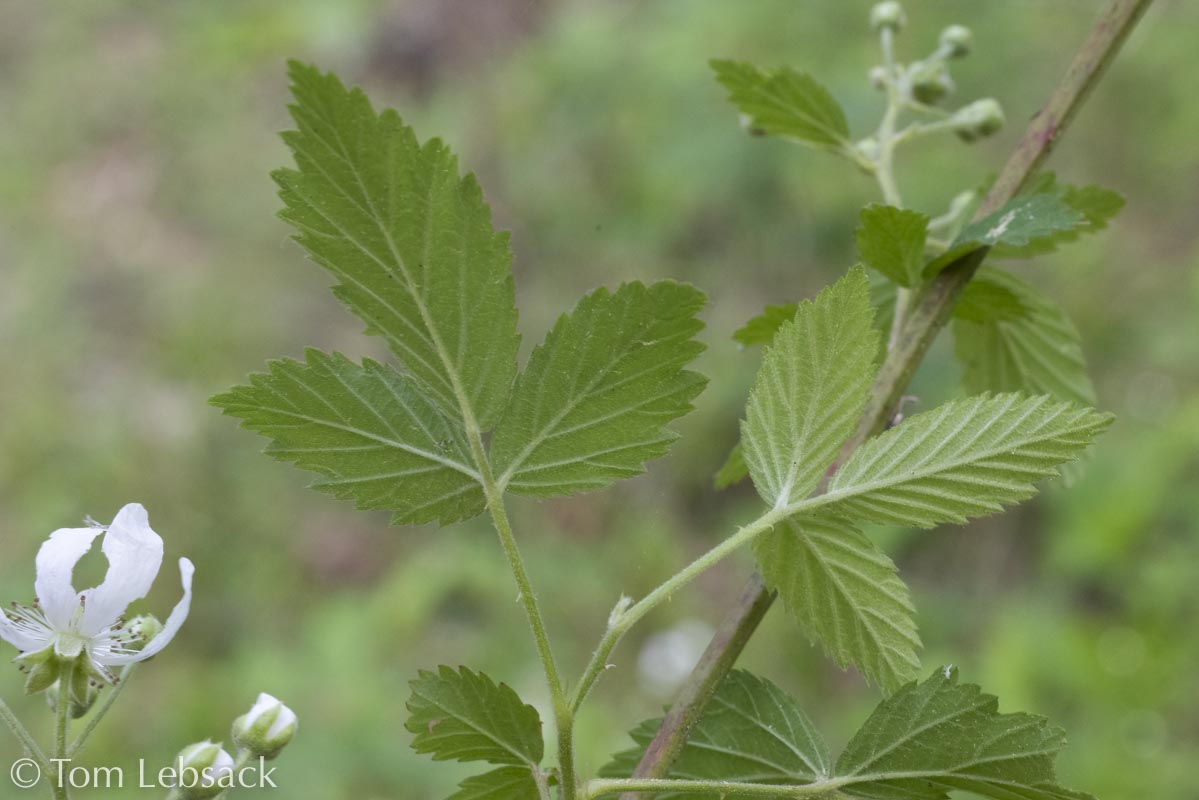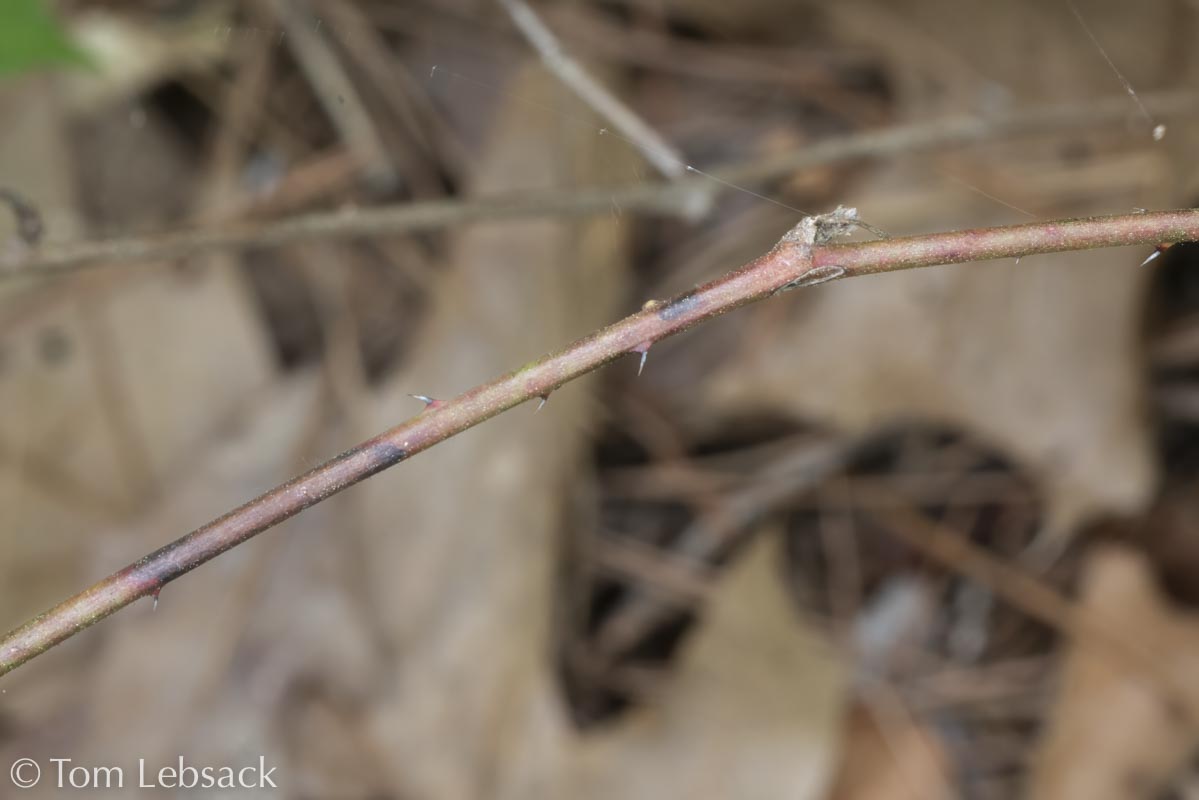Texas Wildbuds
Rubus argutus
(Saw-tooth Blackberry)
| Scientific Name | Rubus argutus (R. louisianus) | USDA PLANTS Symbol | RUAR2 |
| Common Name | Sawtooth Blackberry, Highbush Blackberry | ITIS Taxonomic Serial No. | 24877 |
| Family | Rosaceae (Rose) | SEINet Reference |
Click Here |
| Description | Habitat: Sandy soils in thickets, river bottoms, prairies, edges of woodlands and disturbed areas. Plant: Woody shrub 2 to 6+ ft. high; the canes (stems) often bend or arch, sometimes reaching the ground; older canes are stout, angular (four-sided in cross-section), furrowed or ridged, hairless, reddish brown, or black and with (usually) curved prickles less than 1/4-inch long along the angles; young canes are light green and have downy hairs. Leaves: Alternate, palmately-compound leaves on pale green petioles that are 2 to 4 inches long, often with 1 or 2 small, curved prickles; non-flowering first-year stems (primocanes) usually with 5 leaflets; the flowering second-year stems (floricanes) with mostly 3 leaflets; leaflets are oblong or oblong-oblanceolate with a rounded base and tip that is acuminate to long-attenuate; terminal leaflets larger than others, 3 to 5 inches long and 1 to 2-1/4 inches across; margins are singly or doubly serrate; sparsely hairy on the upper surface; lower is sparsely hairy or with soft pubescent hairs and usually with curved prickles on midveins. Inflorescence: Second-year canes bear short racemes of 5 to 20 flowers about 2 to 6 inches long; each flower is about 1-inch across, consisting of 5 white obovate to elliptic petals, numerous stamens with white filaments and anthers that are white becoming brownish, a light green compound pistil with multiple styles; below are 5 light green, pointed pubescent-hairy sepals that are much shorter than the petals. Bloom Period: May to July. Fruit: Compound drupes that are black, round to ovoid in shape and up to 3/4-inch long; immature fruit is red. References: iNaturalist, Illinois Wildflowers and SEINet; R. louisianus in "Manual of the Vascular Plants of Texas" by Correll and Johnston. |
BONAP Distribution Map Map Color Key |
Texas Status: Native |
Banner photo of Castilleja indivisa and Lupinus ssp. taken along FM 1323 north of Johnson City, Blanco County
© Tom Lebsack 2025
Every attempt is made to provide accurate, up-to-date, and relevant information, but the completeness or accuracy of any information presented on this website cannot be guaranteed. I use authoritative references to insure high standards of accuracy and review and update the information frequently.
